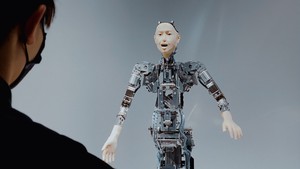FEATURED MACHINE LEARNING
AI Machines Learn to Build Themselves by Understanding User Needs
From arXiv • Latest Research
Scientists created a virtual test environment where machines can be designed from simple parts. This research aims to figure out whether machines built using large language models can learn to perform complex tasks like moving or manipulating objects in a simulated world.
Read Full Paper →
AI Learns Image Editing from Words Alone
Scientists developed a new way to train computers to edit images based on written instructions without needing large collections of pre-labeled example pairs. This new method could have significant benefits for image editing tasks, as it allows computers to learn and improve their skills more efficiently than current methods, potentially leading to better results in fields like photo editing and art generation.
Read Paper →
AI Maps Real World in Stunning 3D Detail With Unmatched Accuracy
Scientists developed a new way to create digital models of the real world that accurately represent buildings and spaces as they exist in three dimensions. This innovation has the potential to greatly improve how these models are used, making it easier to visualize and interact with them from any angle without compromising their accuracy or requiring multiple generations.
Read Paper →
AI Learns By Imitating Its Teachers
Scientists modified a type of computer model to make it work more efficiently by letting it mimic its "teacher" and learn from its behavior. This new approach enables faster and more accurate results in image recognition tasks without sacrificing quality, which could lead to breakthroughs in fields like artificial intelligence and data analysis.
Read Paper →
AI Speeds Up Language Models Without Sacrificing Accuracy
The researchers created a system that automatically adjusts how it updates its cache to make language models run faster without sacrificing accuracy. This improvement allows the language models to process large amounts of information more quickly and efficiently, which could lead to better performance in tasks like generating code or doing mathematical reasoning.
Read Paper →
